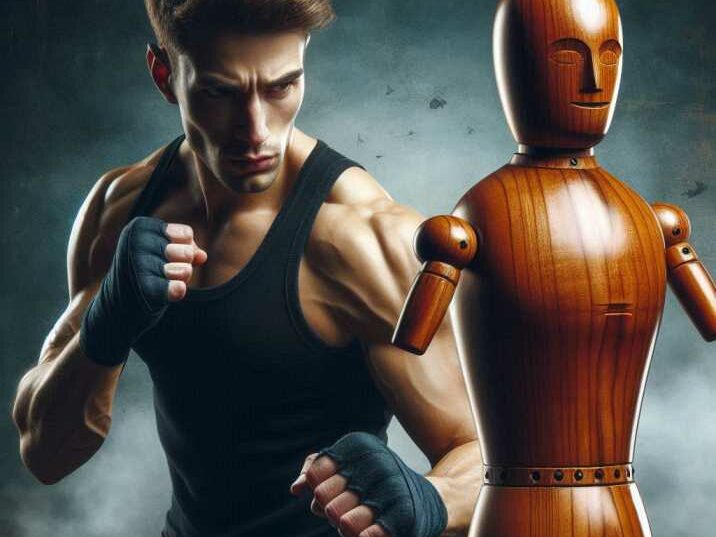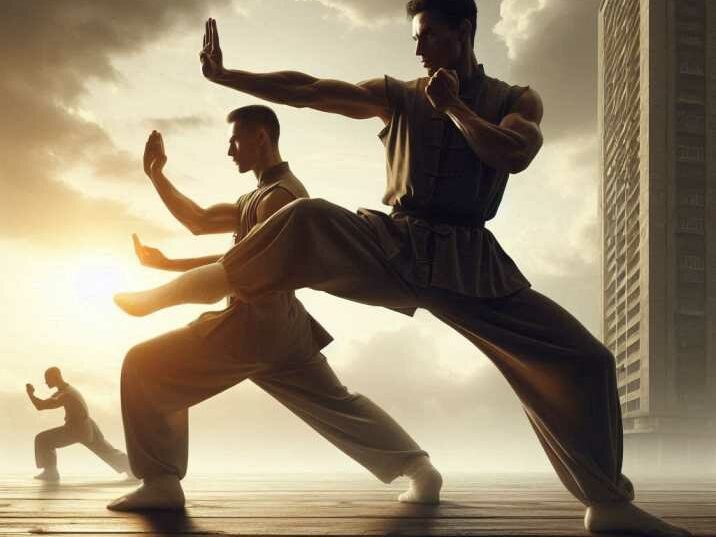Introduction
Table of Contents
What is Wing Chun? Wing Chun, a name that resonates with martial arts enthusiasts worldwide, is more than just a method of combat. It is a philosophy, a way of life, and a discipline that has stood the test of time. Originating from China, this unique martial art has captivated the hearts of many, from the legendary Bruce Lee to modern-day practitioners. But exactly what is Wing Chun?
How did it come to be, and what makes it so special? In this comprehensive guide, we will delve deep into the world of Wing Chun, exploring its history, principles, techniques, and benefits. Whether you are a seasoned martial artist or a curious beginner, this article will provide you with a thorough understanding of Wing Chun and why it continues to be a revered practice today.

Table of Contents
- The Origins of Wing Chun
- The Legend of Ng Mui and Yim Wing Chun
- Historical Context and Evolution
- Core Principles of Wing Chun
- Simplicity and Efficiency
- Centerline Theory
- Economy of Motion
- Techniques and Forms
- Siu Nim Tao
- Chum Kiu
- Biu Jee
- Wooden Dummy Training
- Applications in Self-Defense
- Practical Techniques
- Real-World Scenarios
- Training and Practice
- Finding a School or Instructor
- Daily Practice and Drills
- Sparring and Live Training
- Health Benefits of Wing Chun
- Physical Fitness
- Mental Well-being
- Wing Chun in Popular Culture
- Bruce Lee and Wing Chun
- Wing Chun in Movies and Media
- FAQs About Wing Chun
- Conclusion
The Origins of Wing Chun
The Legend of Ng Mui and Yim Wing Chun
The story of Wing Chun begins with a legend. According to popular folklore, Wing Chun was developed by Ng Mui, a Buddhist nun from the Shaolin Temple. After the temple was destroyed, Ng Mui sought refuge in the mountains, where she observed a snake and crane fighting. Inspired by their movements,
she created a new form of martial arts that emphasized efficiency and directness.Ng Mui later passed on her knowledge to a young woman named Yim Wing Chun, who used the techniques to defend herself against a local warlord. The system was subsequently named after her. While the historical accuracy of this tale is debated, it remains a cherished part of Wing Chun lore.
Historical Context and Evolution
Beyond the legend, Wing Chun’s development can be traced back to the turbulent times of the Qing Dynasty. Martial artists sought methods that could be learned quickly and applied effectively in real combat situations. Wing Chun’s emphasis on close-range combat and rapid strikes made it an ideal choice.Over the centuries, Wing Chun evolved through various lineages and masters, each contributing to its refinement.
One of the most influential figures in modern Wing Chun was Ip Man, who brought the art to Hong Kong in the 20th century. His teachings laid the foundation for Wing Chun’s global spread.
Core Principles of Wing Chun
Simplicity and Efficiency
At its core, Wing Chun is built on the principles of simplicity and efficiency. Unlike other martial arts that focus on elaborate techniques and flashy moves, Wing Chun prioritizes directness. Every movement is designed to be as efficient as possible, minimizing wasted energy and maximizing effectiveness.
Centerline Theory
One of the fundamental concepts in Wing Chun is the centerline theory. This principle involves controlling the central axis of the body, both one’s own and the opponent’s. By attacking and defending along this line, practitioners can maintain balance and control, making it difficult for adversaries to penetrate their defenses.
Economy of Motion
Wing Chun emphasizes economy of motion, which means using minimal movement to achieve the desired outcome. This principle is evident in the art’s close-range techniques, where short, rapid strikes are favored over long, sweeping motions. This approach not only conserves energy but also allows for faster and more effective responses.
Techniques and Forms
Siu Nim Tao
Siu Nim Tao, often translated as “Little Idea” or “Small Thought,” is the first and most fundamental form in Wing Chun. It lays the groundwork for all subsequent techniques and principles. The form focuses on developing proper structure, relaxation, and basic hand movements. Practicing Siu Nim Tao helps students internalize the core concepts of Wing Chun, such as centerline control and efficient movement.
Chum Kiu
Chum Kiu, meaning “Seeking Bridge,” is the second form in Wing Chun. It builds upon the foundation established in Siu Nim Tao and introduces more complex techniques, including turning, stepping, and bridging the gap between oneself and the opponent. Chum Kiu emphasizes coordination, balance, and the ability to generate power through body movement.

Biu Jee
Biu Jee, or “Thrusting Fingers,” is the third and final form in Wing Chun. This advanced form incorporates emergency techniques and recovery methods, teaching practitioners how to regain control in compromised situations. Biu Jee focuses on dynamic and explosive movements, enhancing a student’s ability to adapt to unexpected challenges.
Wooden Dummy Training
The wooden dummy, or Muk Yan Jong, is an iconic training tool in Wing Chun. It consists of a wooden frame with protruding arms and legs, allowing practitioners to practice techniques with a physical target. Wooden dummy training helps students refine their accuracy, timing, and power, as well as develop a deeper understanding of angles and positioning.
Applications in Self-Defense
Practical Techniques
Wing Chun’s practicality makes it an excellent choice for self-defense. The art’s emphasis on close-range combat and rapid strikes ensures that practitioners can effectively neutralize threats. Techniques such as chain punches, palm strikes, and low kicks are designed to incapacitate an opponent quickly and efficiently.
Real-World Scenarios
Wing Chun’s principles are applicable in real-world self-defense scenarios. Whether facing an unarmed attacker or someone wielding a weapon, Wing Chun’s direct and efficient techniques enable practitioners to respond effectively. The art’s focus on maintaining control and exploiting openings ensures that students can protect themselves in various situations.
Training and Practice
Finding a School or Instructor
For those interested in learning Wing Chun, finding a reputable school or instructor is crucial. Look for instructors with a strong lineage and a proven track record of teaching. Many Wing Chun schools offer trial classes, allowing prospective students to experience the training firsthand and determine if it aligns with their goals.
Daily Practice and Drills
Consistent practice is essential for mastering Wing Chun. Daily training should include practicing forms, drilling techniques, and refining movements. Repetition helps internalize the principles of Wing Chun, allowing practitioners to execute techniques instinctively.
Sparring and Live Training
Live training and sparring are vital components of Wing Chun practice. Controlled sparring sessions provide an opportunity to apply techniques in a dynamic environment, improving timing, reflexes, and adaptability. Partner drills and sensitivity training, such as Chi Sao (Sticky Hands), also enhance a practitioner’s ability to read and respond to an opponent’s movements.
Health Benefits of Wing Chun
Physical Fitness
Wing Chun training offers numerous physical benefits. The art’s emphasis on body mechanics and alignment helps improve posture, balance, and coordination. Regular practice also enhances cardiovascular health, muscle tone, and flexibility. The dynamic nature of Wing Chun training provides a full-body workout, promoting overall fitness and well-being.
Mental Well-being Benefits of Wing Chun
In addition to physical benefits of Wing Chun, Wing Chun has a positive impact on mental health. The discipline and focus required in training help reduce stress and anxiety. Practicing Wing Chun fosters mindfulness and concentration, promoting mental clarity and emotional resilience. The sense of accomplishment and progress in training also boosts self-confidence and self-esteem.
Wing Chun in Popular Culture
Bruce Lee and Wing Chun
Bruce Lee, one of the most iconic martial artists of all time, began his journey with Wing Chun. Under the tutelage of Ip Man, Lee developed a strong foundation in the art. Although he later created his own martial art, Jeet Kune Do, Wing Chun’s influence remained evident in his techniques and philosophy. Bruce Lee’s association with Wing Chun brought the art into the global spotlight, inspiring countless individuals to explore its teachings.
Wing Chun in Movies and Media
Wing Chun has made its mark in popular culture, particularly in movies and media. Films such as “Ip Man,” starring Donnie Yen, have showcased the art’s techniques and history, captivating audiences worldwide. Wing Chun’s practical and visually appealing techniques have made it a favorite among filmmakers, further cementing its place in the martial arts pantheon.
Conclusion
What is Wing Chun? Wing Chun is more than just a martial art; it is a testament to the ingenuity and resilience of its creators. Its principles of simplicity, efficiency, and directness have made it a timeless discipline that continues to attract practitioners worldwide. Whether you are interested in self-defense, physical fitness, or mental well-being, Wing Chun offers a holistic approach to personal development.By understanding its origins, principles, techniques, and benefits of Wing Chun, you gain a deeper appreciation for this ancient art.
If you are inspired to embark on your own Wing Chun journey, remember that consistent practice and dedication are key. Seek out experienced instructors, immerse yourself in the training, and embrace the philosophy of Wing Chun. As you progress, you will not only become proficient in a powerful martial art but also cultivate a sense of discipline, confidence, and inner peace.
FAQs About Wing Chun
- What is Wing Chun?
- Wing Chun is a traditional Chinese martial art known for its emphasis on simplicity, efficiency, and close-range combat. It focuses on direct and rapid movements, making it an effective self-defense system.
- Who created Wing Chun?
- According to legend, Wing Chun was created by Ng Mui, a Buddhist nun, and later passed on to Yim Wing Chun. Historically, it evolved during the Qing Dynasty and was refined by various masters over the centuries.
- What are the main forms in Wing Chun?
- The main forms in Wing Chun are Siu Nim Tao, Chum Kiu, and Biu Jee. These forms lay the foundation for the art’s techniques and principles.
- Is Wing Chun effective for self-defense?
- Yes, Wing Chun is highly effective for self-defense. Its focus on close-range combat, rapid strikes, and efficient
- Can anyone learn Wing Chun?
- Yes, Wing Chun is suitable for people of all ages and fitness levels. Its principles can be adapted to individual needs, making it accessible to a wide range of practitioners.


